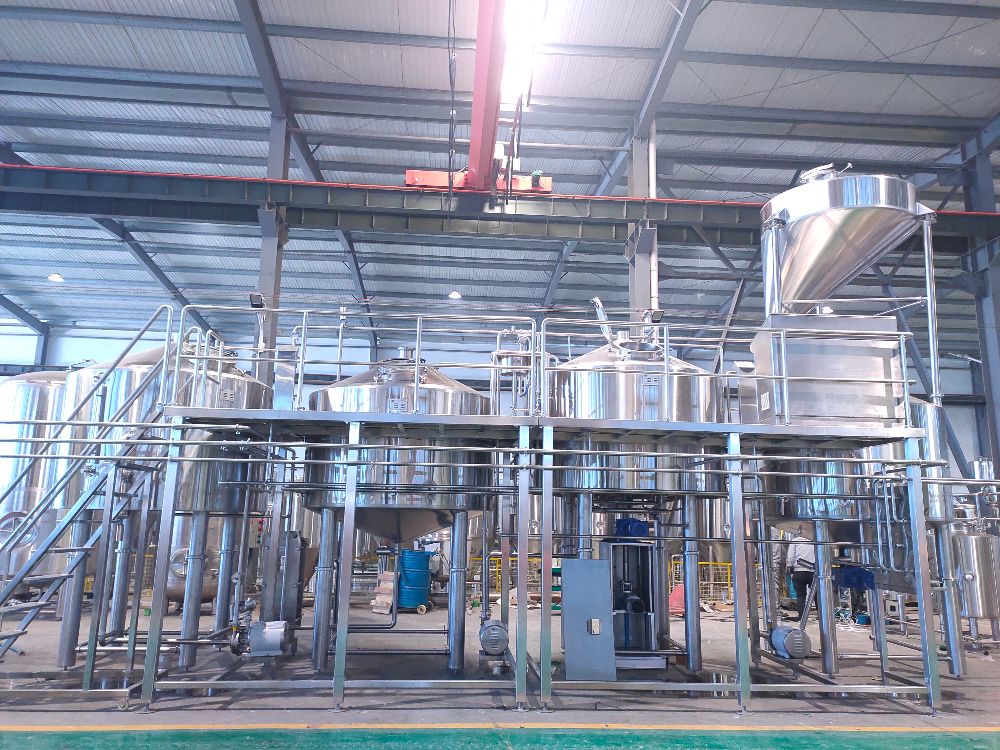Fresh Hop, Wet Hop, Dry Hopped, Double Dry Hopped In Brewery System
- Dec 09, 2021
- 162
- tiantai
Everyone hears all these fancy words in craft beer brewing equipment all the time. But what exactly do they mean and how can you use them for your brewery beer plant?
Fresh & wet hop beers are beer that contain fresh or wet hops.
Dry hopped beers are beers that have had a hop addition after the boil – they are named after the process of dry hopping.
Fresh & Wet Hop Beers
Late August through September mark the hop harvest, when all those delicious hop cones are processed for the year. This is the beginning of the flood of fresh and wet hop beer releases.
Not that it would ever be an issue for an enthusiastic hop fan, but fresh and wet hop beers are meant to be enjoyed as soon as possible since the beer inside expires quickly.
All the flavor and aroma those luscious cones impart can begin to break down. Both fresh and wet hop beers are brewed during or very shortly after the harvest season to capture the aroma and flavor of the hop at its peak.
The Brewers Association Style Guidelines define fresh or wet hop beer as beer "hopped predominantly with fresh (newly harvested and kilned) and/or undried ('wet') hops."
Fresh and wet hops are said to impart "green like" aroma and flavor to the finished beer. Wet hops = newly harvest & unkilned hops; picked from the vine and placed in the kettle within 24 hours - brewers often have to have them overnighted Fresh hops = newly harvest & kilned hops; picked from the bine and placed in the kettle within the week

Dry Hopped & Double Dry Hopped Beers
Hops are usually added during the boil to draw out the alpha acids that give that bitter hop flavor. Brewers might also use hops during the last 5-10 minutes of the boil to enhance aroma, though this technique can still cause you to lose aromatic oils. Dry hopping means adding hops after the boil and after fermentation. Its purpose is to boost hop aroma without also boosting hop bitterness. Hop bitterness tends to emerge when hops are added during the boil, as the aromatics and oils are breaking down. When dry hopping, hops are left to soak in the finished beer for several days to several weeks.
Double dry hopping can mean either that a beer has been dry hopped twice (in two "charges") or hopped with twice as many hops.
Even if a brewery does not offer a single dry hopped version of a beer, DDH can be a descriptor when they double the quantity of hops per barrel that they would use for a single dry hopped beer.
Derrick
Sales Manager
[email protected]
Tiantai Beer Equipment
Fresh & wet hop beers are beer that contain fresh or wet hops.
Dry hopped beers are beers that have had a hop addition after the boil – they are named after the process of dry hopping.
Fresh & Wet Hop Beers
Late August through September mark the hop harvest, when all those delicious hop cones are processed for the year. This is the beginning of the flood of fresh and wet hop beer releases.
Not that it would ever be an issue for an enthusiastic hop fan, but fresh and wet hop beers are meant to be enjoyed as soon as possible since the beer inside expires quickly.
All the flavor and aroma those luscious cones impart can begin to break down. Both fresh and wet hop beers are brewed during or very shortly after the harvest season to capture the aroma and flavor of the hop at its peak.
The Brewers Association Style Guidelines define fresh or wet hop beer as beer "hopped predominantly with fresh (newly harvested and kilned) and/or undried ('wet') hops."
Fresh and wet hops are said to impart "green like" aroma and flavor to the finished beer. Wet hops = newly harvest & unkilned hops; picked from the vine and placed in the kettle within 24 hours - brewers often have to have them overnighted Fresh hops = newly harvest & kilned hops; picked from the bine and placed in the kettle within the week

Dry Hopped & Double Dry Hopped Beers
Hops are usually added during the boil to draw out the alpha acids that give that bitter hop flavor. Brewers might also use hops during the last 5-10 minutes of the boil to enhance aroma, though this technique can still cause you to lose aromatic oils. Dry hopping means adding hops after the boil and after fermentation. Its purpose is to boost hop aroma without also boosting hop bitterness. Hop bitterness tends to emerge when hops are added during the boil, as the aromatics and oils are breaking down. When dry hopping, hops are left to soak in the finished beer for several days to several weeks.
Double dry hopping can mean either that a beer has been dry hopped twice (in two "charges") or hopped with twice as many hops.
Even if a brewery does not offer a single dry hopped version of a beer, DDH can be a descriptor when they double the quantity of hops per barrel that they would use for a single dry hopped beer.
Derrick
Sales Manager
[email protected]
Tiantai Beer Equipment


.jpg)

